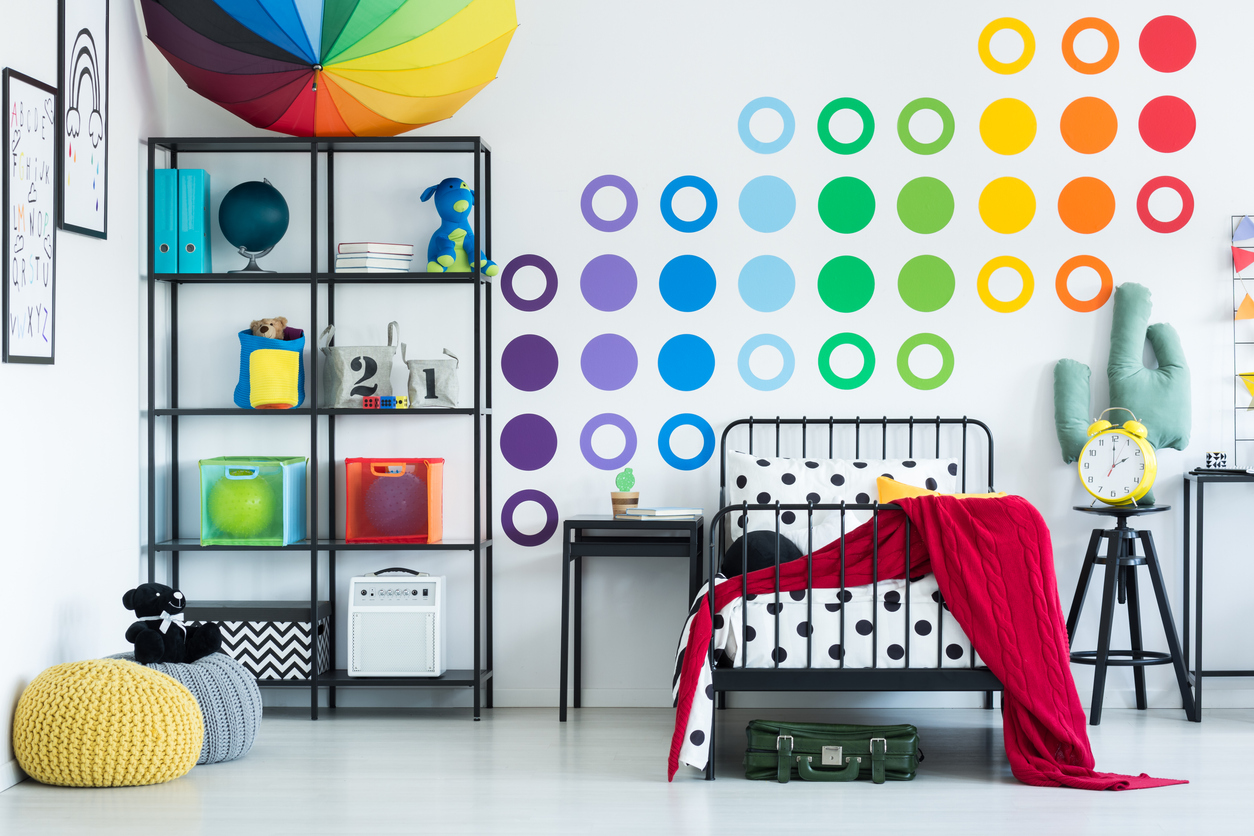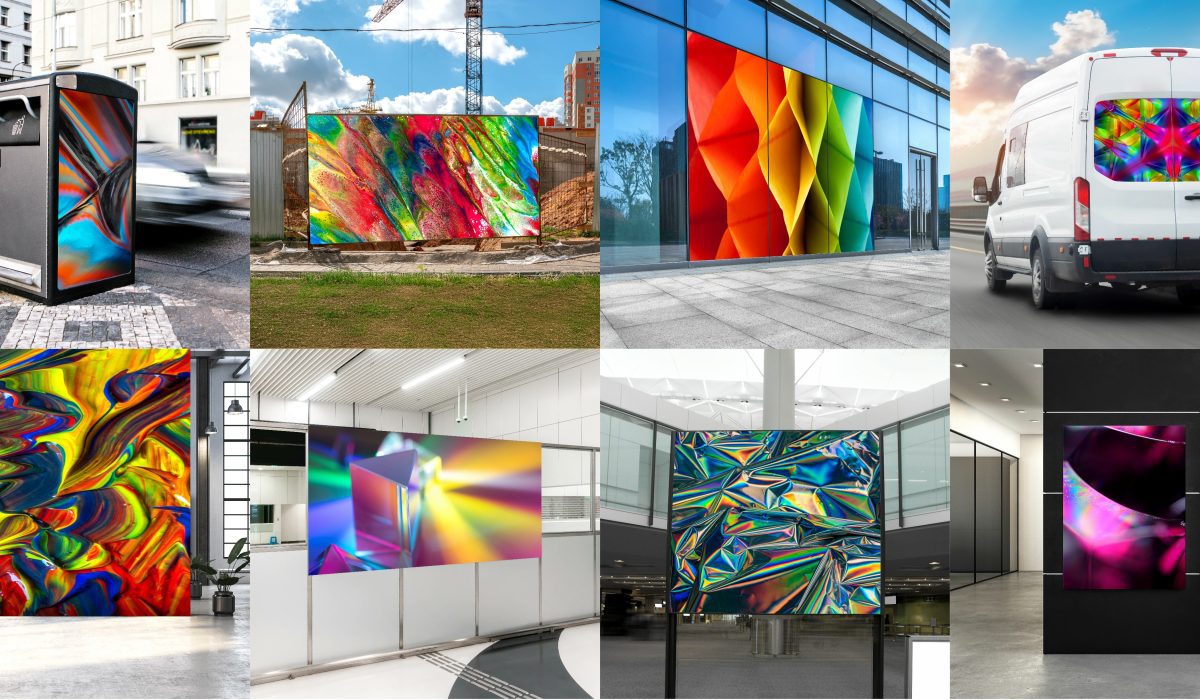Published 25th Nov 2022
Common Problems with Wall Graphics & How to Solve Them

The golden rule with wall graphics is even an adequately specified vinyl can bubble, peel, and lift away from the wall without proper preparation.
Most wall graphics problems are avoidable by testing the vinyl on the surface before installation to ensure adhesion. Inspecting the surface for imperfections such as etching (glass), and holes (plaster) is also critical.
This article reveals the most common problems with wall graphics and how to solve them.
- Peeling
- Releasing
- Bubbling
- Edge Curling
- Lifting
- Tunnelling
Let’s jump in!
Peeling
Wall graphics peel when the adhesive that sticks the vinyl to the wall can’t form a bond. This could be for any number of reasons:
- Incompatible adhesive
- Dirt film
- Improper installation
- Surface damage
- Paint/plastic off-gassing
- Wild temperature fluctuations and exposure to sunlight.
How to fix it
The only way to fix peeling wall graphics is to replace them, but only after figuring out why the original installation failed.
Unfortunately, you can’t ‘re-stick’ wall graphics and maintain the same quality due to interlayer residue. Additionally, you can’t expect a tight bond on loose or dirty surfaces, so testing and preparation are critical.
Look for a high-tack vinyl engineered for your intended application, e.g., UV-resistant vinyl for windows and outdoor vinyl for external installation.
Releasing
Wall graphics not releasing from the transfer layer occurs when the tape is too sticky or when the adhesive is too cold, creating a solid bond.
If you have release problems, you will struggle to get the wall graphics onto the wall without stretching and damaging the vinyl.
How to fix it
Try heating the transfer tape/backing paper with a heat gun or hairdryer to soften the adhesive and reduce its tackiness – however, this will also heat the vinyl. Another option is to heat the surface if it is made from glass or plastic.
Bubbling
Air bubbles form when air is trapped underneath the vinyl, a common issue usually caused by the condition of the underlying surface.
For example, surface imperfections like bobbles, holes, and etching can trap air under the wall graphics, creating an air bubble.
How to fix it
Heat the air bubble with a hair dryer and push it towards the edge of the vinyl with a non-scratch squeegee. This is called ironing out the bubble.
If you installed the wall graphics less than 72 hours ago, there’s also a chance the air bubbles will go away within a few days.
Edge curling
Vinyl can suffer edge curling if it is improperly cut at the factory, which can cause installation issues due to the vinyl not sitting flat on the wall. However, most edge curling only occurs after installation.
The most common cause of edge curling is poor adhesion at the edge caused by inconsistent adhesive application in the case of vinyl that uses a spray adhesive or because of poor surface preparation.
How to fix it
It could be that the surface your wall graphics live on is contaminated with oil/dirt, in which case, you can gently lift the edge, clean underneath it, and reapply an adhesive to the vinyl.
However, replacement is necessary if the vinyl layers are separating because of edge curling (this usually manifests as a thin laminate layer peeling from the top).
Lifting
Wall graphics can lift away from a surface when exposed to extreme heat and cold. While UV-resistant and outdoor vinyl products can prevent this, extreme temperatures can flex and expand the vinyl’s surface.
Another cause of lifting is age – where the adhesive breaks down over time and loses the ability to stick to the surface. A contaminated surface can also cause vinyl lifting.
How to fix it
Preparation is the key – clean the surface thoroughly before vinyl application and press the graphics into the wall to ensure strong adhesion.
If your wall graphics lift after you install them correctly, there’s a chance the adhesive is not compatible with the surface or that the surface is off-gassing (a chemical process of new plastics and paints).
Tunnelling
Tunnelling is when the vinyl and backing paper separate, rendering the vinyl useless due to surface and airborne contamination.
The most significant factor in tunnelling is mechanical stress, such as stretching and rolling the vinyl too vigorously during manufacturing and shipment.
High temperatures can also cause tunnelling by making the vinyl curl up, which introduces movement between the vinyl and backing layers.
How to fix it
Avoid stretching the application tape during lamination, store the wall graphics flat (do not roll them up), and store/ship the vinyl at room temperature.
Latest blog posts
View all posts5th May 2025
Common Challenges with PVC Free Vinyl and How to Overcome Them
PVC free vinyl is becoming an increasingly popular choice for businesses looking to reduce their environmental impact [...]

15th April 2025
Innotech Expands Range of General Formulation Self-Adhesive Vinyls
After becoming the exclusive UK distributor for General Formulations last year, Innotech are now offering the new GF [...]

11th April 2025
Gary from Print.com is Pets in Print Trophy winner
Innotech Digital and Display announce the winner of this year’s Pets in Print competition is Gary from Print.com. He [...]



